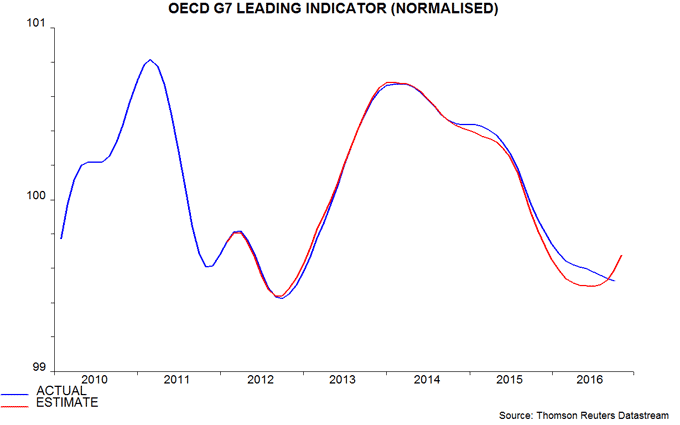Global acceleration watch: OECD leading indicators
Many market participants monitor the OECD’s composite leading indicators for guidance on near-term economic prospects. October numbers to be released on 8 December are likely to be strong, providing further support for the forecast here – based on monetary trends – of a developing global economic boomlet.
The OECD presents its leading indicators in detrended form, meaning that a stable reading signals future economic growth in line with the estimated longer-run trend. As of September, its G7 leading indicator was falling gently, while indicators for China, India, Brazil and Russia were rising. The OECD interpreted these developments as signalling “stable growth momentum in the OECD area with growth gaining momentum in major emerging economies”.
The OECD’s calculations were replicated here in order to produce an October estimate of its G7 leading indicator, based on partial data*. The indicator appears to have risen strongly last month, while revisions may show that it has been increasing since June – see chart. Rather than “stable growth momentum”, therefore, the new data may signal above-trend and accelerating economic expansion.
Key drivers of the October increase and upward revision to earlier data include recent stronger business / consumer surveys, large increases in US housing starts and durable orders in October and financial market developments, i.e. rising stock markets and steepening yield curves.
*For example, additional data points are available for five of the seven components of the US leading indicator. Note that the October indicator readings take into account November data on the components, where available (e.g. US consumer sentiment).


Reader Comments